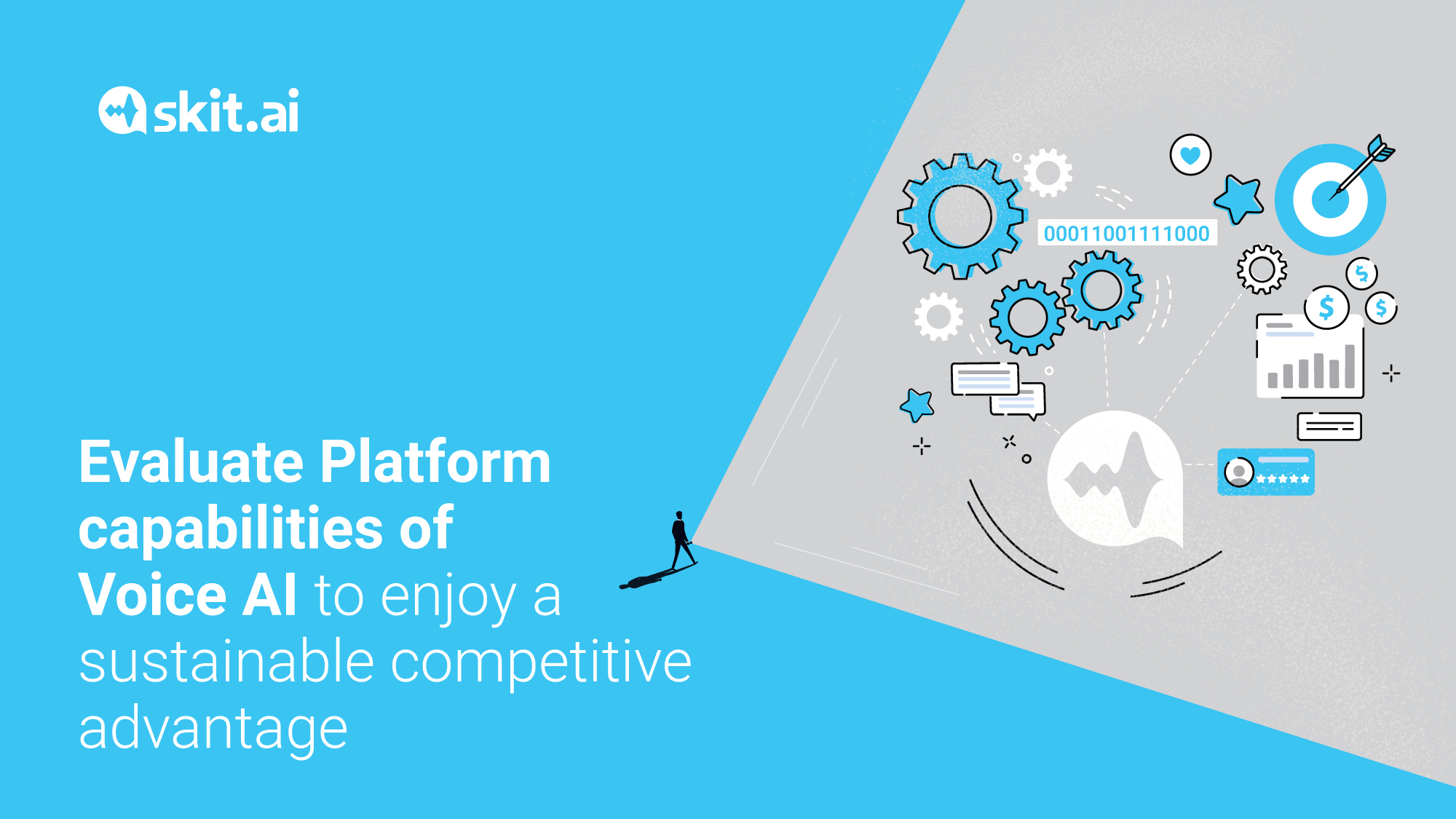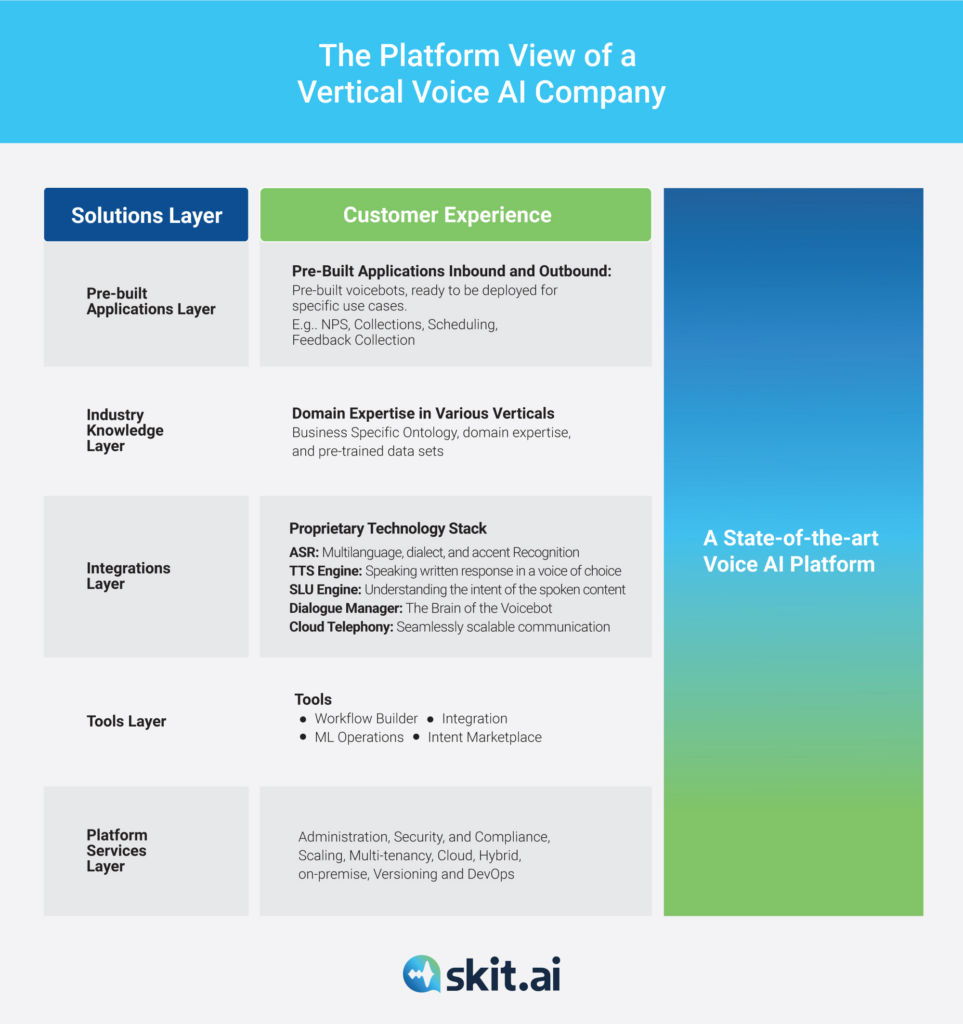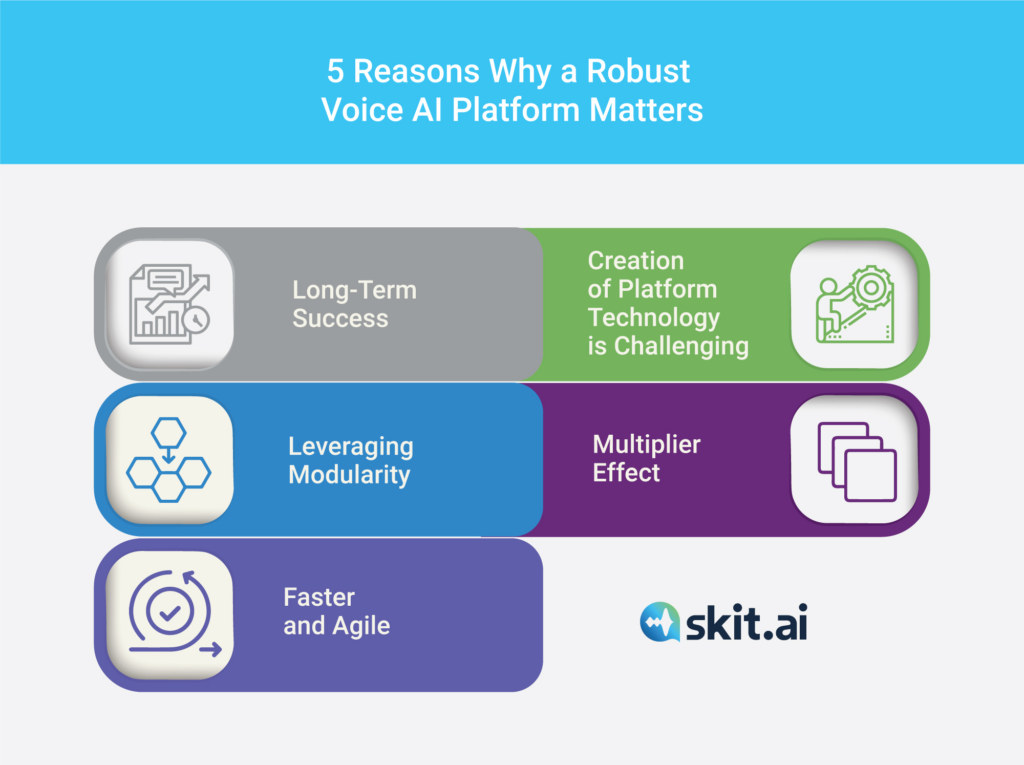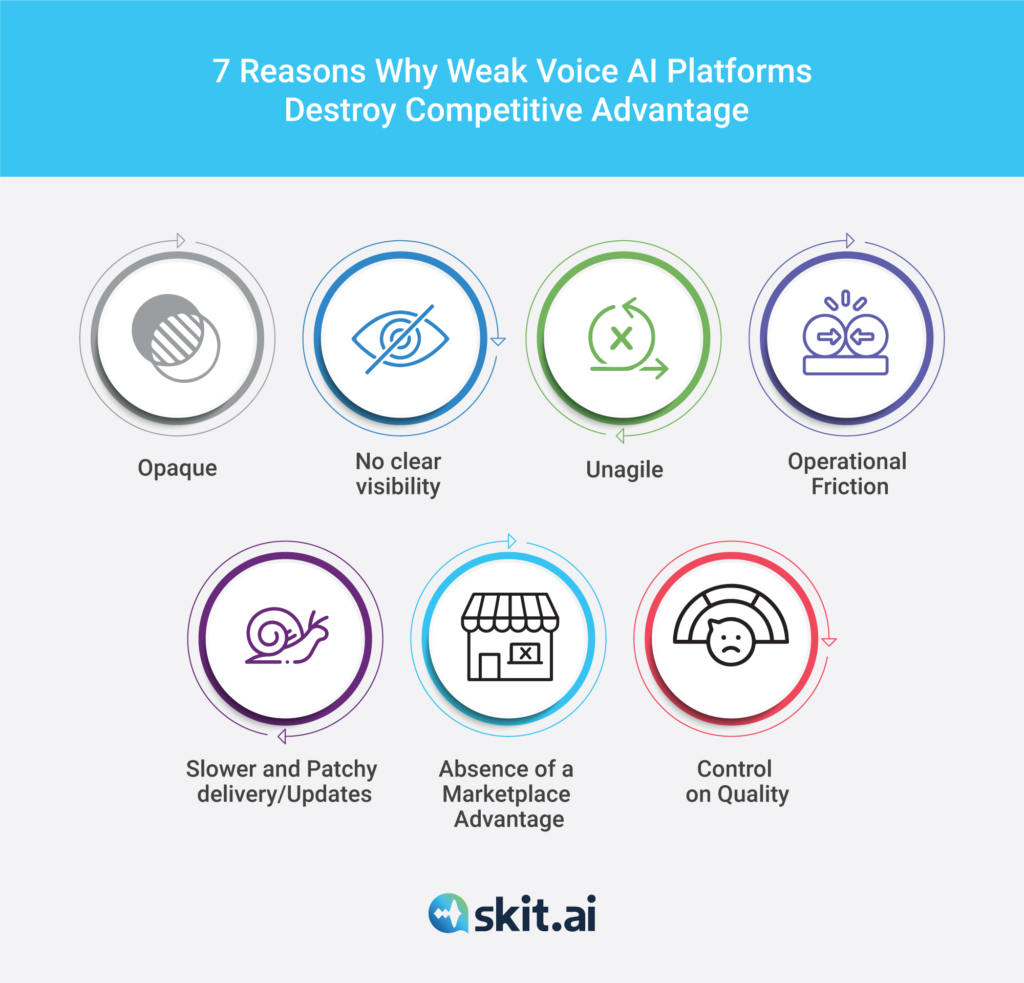Harshad Bajpai
October 3, 2022

Hello! Welcome to Skit.ai. Click here to book a demo.
October 3, 2022

We are at the initial stages of Voice AI’s evolution, in an epoch where well-functioning vertical Voice AI solutions will be instrumental in helping companies transform customer support and gain customer loyalty. But to a significant faction of CXOs, the understanding of Voice AI technology, its capabilities, and nuances remain obscure. Our earlier articles have tried to elucidate voice technology and how it can prove instrumental in transforming contact centers. In this article, we further that conversation and move on from discussing the Voice AI ‘product’ to the ‘platform’ and why companies looking to automate their contact centers must consider platform capabilities as a factor that will impact their long-term success.
The platform question holds greater gravitas when the top priorities are ROI, time-to-live, control over performance, and market leadership. In this blog, we deep dive into the core questions: what does a Voice AI platform look like, why does having a capable platform matter, and what are its far-reaching implications?
A Deep Dive: Unique Advantages of a Voice-first Voice AI Vendor
Today, voice technology has advanced sufficiently to deliver intelligent voice conversations. The wait is finally over, and companies can transform their CX with voice-first Augmented Voice Intelligence platforms.
Voice AI is the most significant automation trend of 2022.
Here are a few core considerations that CXOs must deliberate over while evaluating a Voice AI solution:
Know more about KPIs while deciding on a vendor
Even coming to the correct conclusion about a Voice AI vendor capabilities is not easy. But let’s assume the product is good, but before signing up, look into the vendor’s platform capability. It is the next big and most important task because, in the long run, the performance will depend mainly on the platform’s capabilities.
Explore More: The Ultimate Voice AI Vendor Selection Guide
Before we go deep into the topic, let us, distinguish a product from a platform.
In other words, a platform is an enabling environment over which many products run. The architecture of a chat-first voice-capable platform will be very different from that of a voice-first platform because the latter is built and optimized for voice, giving it a distinct performance edge. Here is a glimpse of a purpose-built Augmented Voice Intelligence Platform:

From the above diagram one thing comes out clearly: that for smooth functioning of a Voice AI solution, its various constituent parts must work in perfect synchronicity. Hence, beyond the product, i.e., the voicebot, various other platform features are needed for an ideal Voice AI solution.
Let’s deep dive to answer the questions: why should companies look for platform capabilities in their potential Voice AI vendor?
At the core of this issue is the increasing realization that voice as a medium of customer support will see an irreversible rise in the coming years, led by Voice AI technology. In the long run, any company that wants a firm hold on its market share or leadership must look into the Platform capability of its Voice AI vendor to enhance the probability of sustainable success and competitive advantage. Here are the five core advantages of a robust Voice AI platform:

Here are some of the capabilities of an evolving Voice AI platform:
A Voice AI vendor can have a great product and a short time to market. But if it is missing a great platform, then, in the long run, its clients will lose their competitive advantages. A CXO can indirectly identify the signs of a weak platform. Here are a few major red flags of a weak platform:

Some great ways to identify these telltale signs is to engage in a free-of-cost pilot or to ask relevant questions during detailed demos.
The essential thing is, a Voice AI vendor must possess a great product that can converse intelligently with consumers or callers. Additionally, this product must be facilitated by a robust underlying platform that enhances its capabilities, adding to the overall experience of creating, deploying, and improving the voicebot.
To learn more about Voice AI solution and what it can do for a contact center, book a consultation now: www.skit.wpenginepowered.com
The auto finance industry is experiencing significant transformations driven by market dynamics, consumer behavior, and technological innovations. Here are the key trends shaping the future of auto finance, focusing on the implications for Buy Here Pay Here (BHPH) dealers and the role of Conversational AI and contact center automation in streamlining operations, which will help […]
The auto finance industry, a crucial pillar in the automotive market, experienced a turbulent Q2 in 2024. The rise of delinquent accounts in subprime lending has become a significant concern for industry stakeholders. Subprime lending, which targets borrowers with lower credit scores, is inherently riskier, and recent economic pressures have worsened these risks. This blog […]